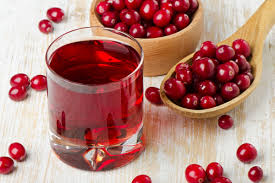
CRANBERRY
Cranberry. Small, spherical, hard, and red, cranberries are characterized by their acidic or bitter taste. Although they are frequently considered a Thanksgiving must, they can also be found in sauces, drinks, muffins, and other recipes all year long. Similar to blueberries, cranberries are tiny, spherical, deep-red berres. Since they taste bitter and sour, they are rarely eaten raw and are usually consumed dried or in juice.
CRANBERRY
In freshwater bogs, primarily in the northern United States and southern Canada, Cranberries are grown on vines. The plant has tiny, oval-shaped leaves, and these berries are found on low-lying vines near the ground. It bears fruits and blooms on short, erect branches. September and October are when these fruits ripen.
1. substances that act as antioxidants

Plant components found in cranberries have antioxidant and protecting properties. The majority of them are located in the berry’s skin and could be lost after juicing.
2. aid in avoiding urinary tract infections
Perhaps the most well-known use of cranberry juice is in the treatment of urinary tract infections (UTI). Pro-anthocyanidin chemicals, which are found in cranberries, have natural antibacterial benefits and may help stop Escherichia coli from adhering to the bladder and urinary tract surface and creating an infection.
3. anti-aging qualities

Only a small number of fruits, including cranberries, are rich in pro-anthocyanidins, which are compounds that help plants defend themselves. The majority of study on cranberries has been on their benefits for urinary health; however, additional studies indicate that their advantages may extend to preventing cognitive decline and skin collagen breakdown. More research is required in this exciting field because the majority of the evidence to far has come from animal studies that used pro-anthocyanidins from other plant sources.
4. support the health of your skin
Beta-carotene, one of the carotenoids found in cranberries, is converted by the body into vitamin A for strong immune function, good skin, and eyes. Additionally, they contain lycopene, which may help shield the skin from UV rays.
5. encourage heart health

According to several human studies, consuming cranberry extract or juice on a regular basis may lower some of the major risk factors for heart disease. These include lowering blood pressure, enhancing cholesterol balance, and lowering homocysteine, a substance known to harm blood vessel linings.
6. lower the chance of developing stomach ulcers

Although, a plant chemical found in cranberries may lower the risk of stomach cancer and ulcers brought on by the Helicobacter pylori bacteria. Consuming cranberry products that are naturally high in this substance, called A-type pro-anthocyanidins, seems to inhibit bacterial growth, which may lower the risk of stomach cancer.
7. Antimicrobial qualities
Meanwhile, cranberries have the potential to prevent the growth of Helicobacter pylori, Escherichia coli, and Listeria monocytogenes, the food poisoning bug.
8. shield against specific types of cancer

However, one of the greatest foods to consume is cranberries, which contain ursolic acid, a plant chemical that has anti-inflammatory, antioxidant, and maybe anti-cancer properties. It might be helpful in preventing some types of cancer, but before any such recommendations can be made, clinical trials are required.
Summary
Also, cranberries, whether eaten fresh, dried, or as a juice, are a good source of vitamin C, potassium, and iron. They include a lot of beneficial plant chemicals that can help keep the immune system strong and avoid UTIs. Cranberries give a beneficial nutritional contribution when included in a balanced, diverse diet at normal levels.